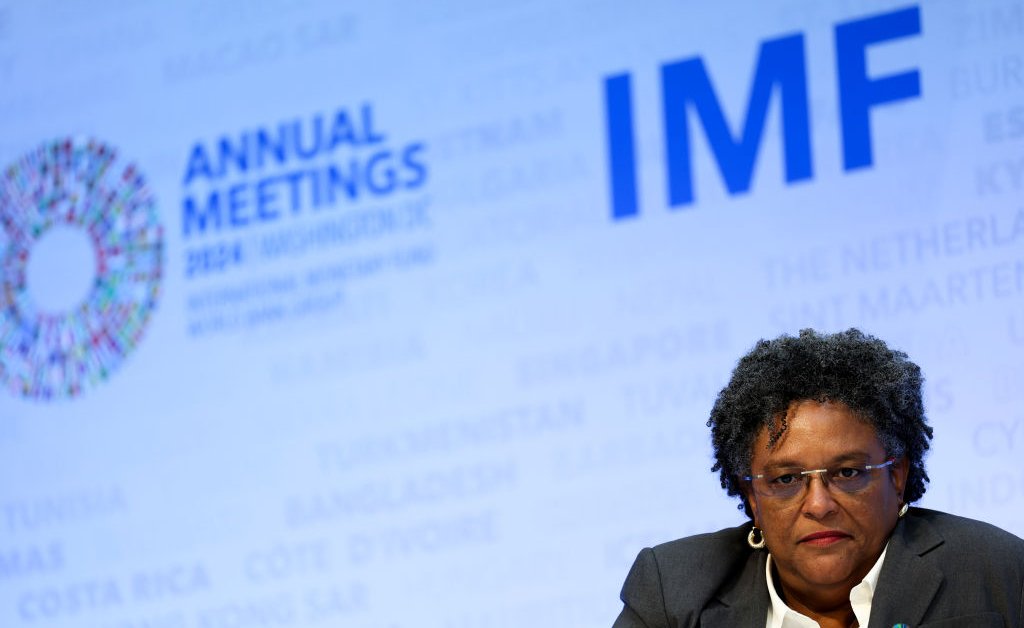At this week’s U.N. Oceans Conference in the south of France, delegates need only glance outside the conference hall at the glittering Mediterranean for a stark reminder of the problem they are trying to solve. Scientists estimate there are now about 400 ocean “dead zones” in the world, where no sea life can survive—more than double the number 20 years ago. The oceans, which cover 70% of Earth and are crucial to mitigating global warming, will likely contain more tonnage of plastic junk than fish by 2050. And by 2100, about 90% of marine species could be extinct.
But for all the grim talk among government officials, scientists, and investors, there is also much discussion about something that might help: Artificial intelligence.
AI has been used by oceanographers for many years, most commonly to gather data from robots sitting deep underwater. But scientists and environmentalists say breakthroughs just in the past few years—first, with generative AI, and since this year with vastly more sophisticated agentic AI—open possibilities for which they have long been waiting.
“What is very new today is what we call the ‘what if’ scenarios,” says Alain Arnaud, head of the Digital Ocean department for Mercator, a European Union intergovernmental institution of ocean scientists who have created a “digital twin of the ocean”—a forensic baseline examination of the global seas.
Depicted on a giant live-tracking monitor mounted in the conference’s public exhibition space, the “digital twin” shows dots of 9 billion or so data points beamed up to satellites from underwater cameras. While that type of data is not necessarily new, innovation in AI finally allows Mercator to game out dizzyingly complex scenarios in split-second timing. “Is my tuna here? If I fish in this area, at this period, what’s the impact on the population? Is it better in that area?” Arnaud says, standing in front of the live tracker, as he described just one situation.
Until now, turning vast quantities of data into policy and actions has been dauntingly expensive and lengthy for most governments, not to mention the nonprofit environmental organizations and startups that have poured into Nice this week.
But now, some say the focus on oceans could open a whole new tech front, as countries and companies try to figure out how to reduce their environmental impact and as AI applications proliferate.
“The potential is immense,” says investor Christian Lim, who heads the ocean investment fund for Swen Capital Partners, an asset manager in Paris. “You’re investing in innovations which transform massive industries,” he says, citing the $300 billion global seafood industry, and the global shipping industry, which transports more than 80% of the world’s cargo. Lim, an ardent free-diver (he dived near the conference site this week) quit his finance job in 2018 to launch his own ocean venture-capital company, before joining Swen. “I looked around and realized no one was doing this,” he says. “I decided to do it myself.”
Lim is among many in Nice this week discussing how to launch money-making ideas to help oceans regenerate.
The Norwegian startup OptoScale, for example, launched in 2018 to tackle a major problem in the region’s oceans: industrial salmon fishing. A single OptoScale AI-enabled camera dropped into a cage with about 200,000 fish calculates each salmon’s weight in real time, and beams it back to the office computer to calculate the exact amount of food to provide the fish—a huge savings in cost, waste, and ocean pollution. The startup now has contracts with big fishing companies, and Lim, an early investor, sold out last month to New York investment firm Insight Partners.
Water pollution is being tackled by Swedish firm Cognizant, which harnesses agentic AI to help companies track the water quality of rivers and water networks in the U.K.—a persistent issue for which utilities companies have been fined. “Three months ago we discovered two sewage networks that were supposed to be closed off in the 1970s,” Stig Martin Fiskaa, who heads Cognizant’s ocean program, told a conference panel on Tuesday. The company plans to make its AI application freely available this week. “It has only been tested in the U.K.,” Fiskaa says. “We are pretty confident it can work anywhere in the world.”
Meanwhile, OnDeck Fisheries AI, a Vancouver startup, captures video footage from fishing vessels, then uses AI to identify specific species caught or thrown into the ocean. This helps crack down on rampant illegal fishing. It can also avoid companies and countries posting people on-board to monitor fishing; several have been murdered for exposing large-scale violations. “It is one of the most dangerous jobs in the world,” says Ronald Tardiff, ocean innovation lead for the World Economic Forum’s center for nature and climate in Geneva. “OnDeck can have AI spot every instance where someone threw something overboard and identify exactly what it is.”
Some say that if small-scale AI ideas show they will make money, big companies could well rush in.
“Build a prototype that proves itself, work out a business model, and then bang, it’s investable,” Frederick Tsao, chairman of Singapore’s TPC shipping giant, told TIME in Nice on Wednesday; he has spent days meeting with top officials and scientists, and says he has found many potential collaborators for ocean regeneration projects. “The money is here,” he says.
Until those investable ideas gel, many in Nice say ocean regeneration is severely lacking in investments—compared to on-land climate projects.
“The technology is here, and it’s powerful,” Stephen Keppel, president of Pvblic Foundation, a Miami nonprofit funder, told a panel in Nice on Tuesday. “We are not lacking data. We’re lacking interoperability, and the way to turn it into action.”








